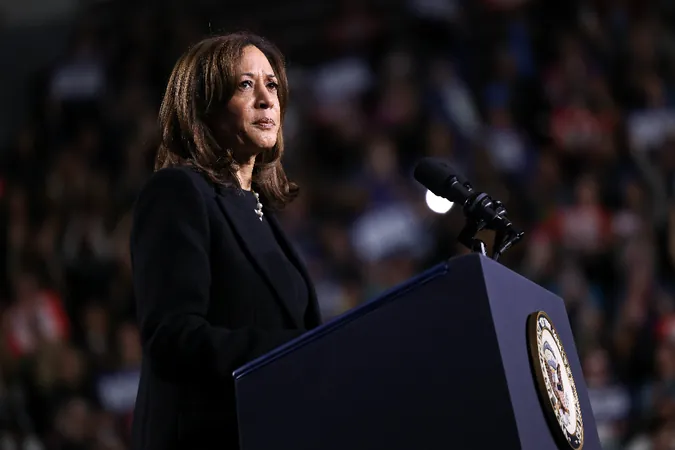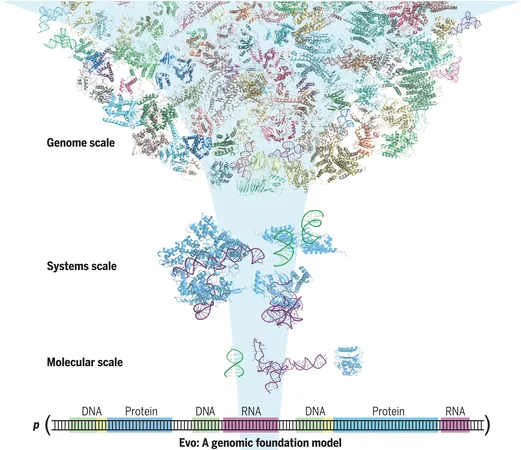
How the Democratic Party's Failures Led to Trump's Stunning Comeback
2024-11-06
Author: Olivia
The Hard Truth
The Democratic Party has faced defeat against Donald Trump in two out of the last three presidential elections, despite his perennial unpopularity. Just four months prior to this latest election, a large majority of voters regarded him as "embarrassing" and "mean-spirited." Yet, in this election, Trump not only reclaimed the Electoral College but, for the first time, seems to have won the popular vote, while also achieving prospective control of Congress.
Shockingly, the Democratic Party’s failure compounds their financial advantage; they significantly out-fundraised Trump. Even with candidates, at times, appearing almost determined to sabotage their own campaigns—making gaffes and alienating key demographic groups—the Democrats still managed to squander their opportunity. This failure comes on the heels of a prolonged campaign focused on undermining Trump rather than providing a cohesive vision for the future.
The inability of the Democratic establishment to secure election victories and save themselves from electoral disaster is glaring.
Understanding the Voter Sentiment
Recent exit polls confirm a troubling trend: voters are increasingly dissatisfied with the economy. Throughout the campaign, data consistently showed that economic issues were paramount for potential voters, particularly those leaning toward Trump. Many undecided voters voiced their frustration that Kamala Harris, the Democratic candidate, failed to present a clear alternative to President Biden's policies. One noteworthy example emerged from Milwaukee, where an eighteen-year-old first-time voter expressed a preference for Trump due to economic concerns, despite generally favoring Democratic policies.
History shows that when an unpopular incumbent leads a party, voters often punish that party at the polls. This election echoed patterns established decades earlier, from Reagan's victories over Carter to Obama's triumph in 2008. CNN’s Harry Enten noted that historically, no party had been able to secure reelection when facing such low approval ratings for their president and widespread dissatisfaction with the nation’s direction.
Misunderstanding the Economic Challenges
Democratic pundits have long touted the Biden economy as spectacular—boasting low unemployment and stock market gains—but have overlooked the reality faced by many Americans. Statistics reveal alarming trends: rising evictions, skyrocketing homelessness, and an increase in poverty and food insecurity, all framing a deeper economic hardship that contradicts the party's self-congratulatory narrative.
Unbeknownst to many, during Trump’s final year in office and partly due to the pandemic-related policies, America saw what the New York Times referred to as a “European-style welfare state.” However, this safety net disappeared under Biden, leading to financial hardships for millions. Moreover, the reintroduction of stringent student loan repayment methods just before the election only exacerbated voters' anger.
Had Biden fought harder for meaningful policies that could alleviate such burdens, the resulting support might have shifted the political landscape. The Democrats failed to recognize that many Americans previously benefitted economically under policies initiated in Trump's last year, which then vanished under the Biden administration.
The Leadership Factor
Harris’ campaign was marked by her failure to connect with voters, her lack of a clear vision, and her inability to separate herself from Biden's unpopularity. Her previous poor performance during the Democratic primaries should have served as a warning, yet the party installed her as the face of their campaign, ultimately leading to a lackluster showing.
The Democratic Party had a choice: emulate successful left-leaning movements in other countries that focused on enhancing purchasing power through wage increases or adopt a strategy reminiscent of UK's Labour leader Keir Starmer. Instead, Harris fell back on a mix of outdated strategies that had already been shown to fail, growing increasingly disconnected from the economic concerns of working-class voters.
The Strategic Blunders
The Democratic establishment seemed to revert to a familiar playbook by focusing on social issues such as abortion and democracy instead of economically pressing matters such as inflation and healthcare. This approach bore the brunt of the fallout, while the party's advertising saturations emphasized character attacks on Trump rather than substantive policies appealing to everyday Americans.
Compounding these issues, Harris avoided discussing initiatives like the $15 minimum wage, which had garnered widespread support during the 2020 election cycle. This negligence likely cost her electorally. Voter sentiment against the Democratic leadership reached further complications as key constituencies felt ignored or alienated, culminating in losses in traditionally blue areas like Michigan, where Trump seized valuable support.
In summarizing this disastrous campaign strategy, it's evident that the Democratic Party not only failed to adapt to current voter needs but also underestimated the impact of economic dissatisfaction. The results speaks volumes about the importance of addressing fundamental issues that matter to the electorate, highlighting the critical miscalculations that led to Trump's unexpected resurgence. The question now remains: Can the Democratic Party learn from its mistakes before the next election cycle?









 Brasil (PT)
Brasil (PT)
 Canada (EN)
Canada (EN)
 Chile (ES)
Chile (ES)
 España (ES)
España (ES)
 France (FR)
France (FR)
 Hong Kong (EN)
Hong Kong (EN)
 Italia (IT)
Italia (IT)
 日本 (JA)
日本 (JA)
 Magyarország (HU)
Magyarország (HU)
 Norge (NO)
Norge (NO)
 Polska (PL)
Polska (PL)
 Schweiz (DE)
Schweiz (DE)
 Singapore (EN)
Singapore (EN)
 Sverige (SV)
Sverige (SV)
 Suomi (FI)
Suomi (FI)
 Türkiye (TR)
Türkiye (TR)